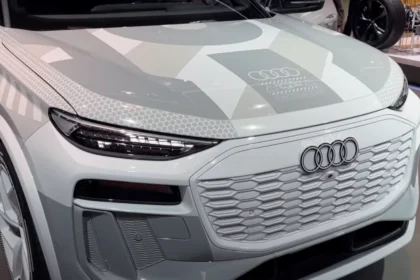There is a $100 billion revenue opportunity in the electric vehicle value chain in India, on vehicle batteries, components, and manufacturing, according to Bain & Company.
Around 40%-45% of all two-wheelers and 15%-20% of all four-wheelers (passenger vehicles) sold in India would be electric by 2030, it said.
The adoption would be a result of 12-13 million new two-wheelers and 1 million new four-wheeler passenger EVs being sold in India yearly by 2030, added the report.
Companies are going to need to make moves across the value chain backward and forward, to deliver this end-to-end EV solution, and it doesn’t mean that everyone that makes cars needs to make batteries or needs to set up their own charging stations, but they will need to at least have partnerships or tie-ups in the space.
Mihir Sampat, partner, Bain & Co’s advanced manufacturing and services practice
Five factors would mainly drive the predicted adoption, per The Economic Times: electric vehicles are becoming more cost-competitive on a capital cost basis, government-supported incentives, growing infrastructure to back electric vehicles with charging and battery swapping, materials or product investments going into the market, customers’ understanding of economic benefits of owning EVs, and vehicles getting more suited to the market.
Gaps in EV capital costs in India have materially lowered because of the sustained global decline in battery prices until 2021.
Meanwhile, battery costs marginally increased this year due to inflationary pressures. However, there were government subsidies domestically.
For instance, with subsidies considered, a high-speed two-wheeler EV vehicle costs only 15%–20% more than its ICE counterpart in Delhi.
BEV market in India
For India’s commercial vehicles, BEV market penetration would be more modest, with light commercial vehicles up to 25%, medium and heavy commercial vehicles up to 5%, and buses up to 20% by 2030.
To help in EV adoption, companies would need to produce or source new capabilities such as:
- software and system integration
- develop competitive electric vehicle platforms for the mass market
- design new channel structures with sustainable economics
- manage an ecosystem of EV partnerships
- adopt a sustained focus on safety through greater localization
- quality control and audits, and standardization to quell customer concerns.
By 2030, a $76 billion to $100 billion revenue pool range would possibly translate to an $8 billion to $11 billion participant profit pool.
Revenue pool in the electric vehicle supply chain
The revenue pool might be realized from areas in the EV supply chain like battery swapping ($1-2 billion); mobility ($5-6 billion); charging ($6-8 billion), EV charging auto components, software, and telematics ($7-9 billion); other components like chassis, motors and plastic parts ($7-11 billion); Battery ($10-13 billion); and; auto OEM, sales, and service ($40-51 billion).
Sampat added that there is no cell manufacturing in the country at present. Companies are trying to sort through chemistry and raw materials. However, it was believed there would be some localization of cell manufacturing while the rest would continuously be imported by 2030.
There would also be a localization of battery management systems and packaging, happening within and outside the OEM, said Sampat.






